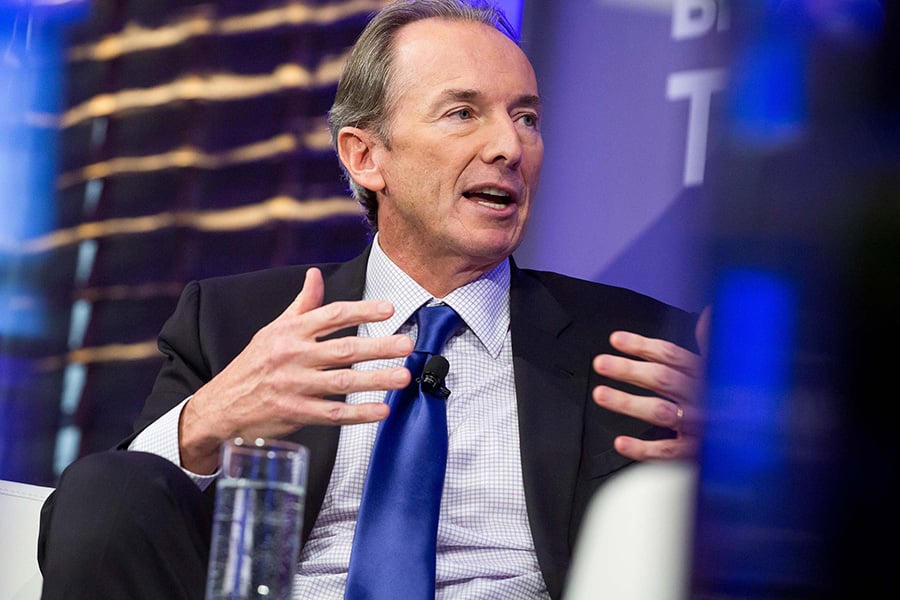

The wirehouse world historically has wanted next to nothing to do with registered investment advisers, who have been siphoning off leading teams of wirehouse financial advisers for decades. RIAs are the direct competitors to wirehouses, which have the wealthiest clients and the biggest revenue-producing advisers in the industry, but have also seen their market share slip in the past decade.
Financial advisers who leave a wirehouse and set up their own business as an independent RIA are betting on themselves; their independent financial advice practice can wind up being worth more on the market than if they finish their career at a big bank like Merrill Lynch, Morgan Stanley, UBS or Wells Fargo Advisors.
Simply put, advisers have the potential to make more money if they leave a wirehouse and move to or launch an RIA.
Networks and aggregators of RIAs are bigger than ever; on Friday morning, shares of Focus Financial Partners Inc. traded above $62, an all-time high for the RIA aggregator that had its initial public offering in 2018.
Private equity managers and other investors keep snapping up RIAs at a blistering pace. Dealmaking is ever more inventive; just last month, two RIAs and a special purpose acquisition company said they were combining in a highly unusual transaction to create a new company, Alvarium Tiedemann Holdings, that will be listed on Nasdaq and has aggressive growth targets for assets and earnings.
That's why ears in the financial advice industry undoubtedly pricked up this month when not one but two CEOs at major banks and brokerages, Morgan Stanley's James Gorman and Wells Fargo & Co.'s Charlie Scharf, took time to muse a bit about their RIA competitors during conference calls with analysts to discuss third-quarter earnings.
With close to 16,000 financial advisers, Morgan Stanley closed the acquisition last month of Hyas Group, an institutional consulting firm with $43 billion in fee-based assets that manages retirement money for smaller businesses. Morgan Stanley's CEO James Gorman praised the deal as an indication of the firm's growth strategy, with Morgan Stanley moving from one type of adviser-client relationship to a variety.
Gorman called Hyas an "RIA-type team" and added: "We can't predict the future, but it looks like it is set up to have multiple channels of growth in the years ahead, which is the strategy."
"We were losing advisers to RIAs," Gorman said, adding that Morgan Stanley was "losing some of the smaller producers to places like Linsco Private Ledger. That has all turned."
Meanwhile, Wells Fargo Advisors appears be trying to figure out how to make better use of its own RIA custody channel for advisers, which it created a couple of years ago. Over the summer, the firm tapped John Tyers, most recently chief growth officer at AdvisorEngine, to head the independent adviser group at Wells Fargo Advisors.
"We have a platform where people can actually go independent and continue to do the business through us," said Wells Fargo CEO Charlie Scharf, adding that the bank had "underinvested" in the independent adviser business.
It seems that the wirehouses are taking the RIA competition pretty seriously. If you can't beat 'em, join 'em.
Learn the difference between a wirehouse and an RIA here.

Rajesh Markan earlier this year pleaded guilty to one count of criminal fraud related to his sale of fake investments to 10 clients totaling $2.9 million.

From building trust to steering through emotions and responding to client challenges, new advisors need human skills to shape the future of the advice industry.

"The outcome is correct, but it's disappointing that FINRA had ample opportunity to investigate the merits of clients' allegations in these claims, including the testimony in the three investor arbitrations with hearings," Jeff Erez, a plaintiff's attorney representing a large portion of the Stifel clients, said.

Chair also praised the passage of stablecoin legislation this week.

Maridea Wealth Management's deal in Chicago, Illinois is its first after securing a strategic investment in April.
Orion's Tom Wilson on delivering coordinated, high-touch service in a world where returns alone no longer set you apart.
Barely a decade old, registered index-linked annuities have quickly surged in popularity, thanks to their unique blend of protection and growth potential—an appealing option for investors looking to chart a steadier course through today's choppy market waters, says Myles Lambert, Brighthouse Financial.
